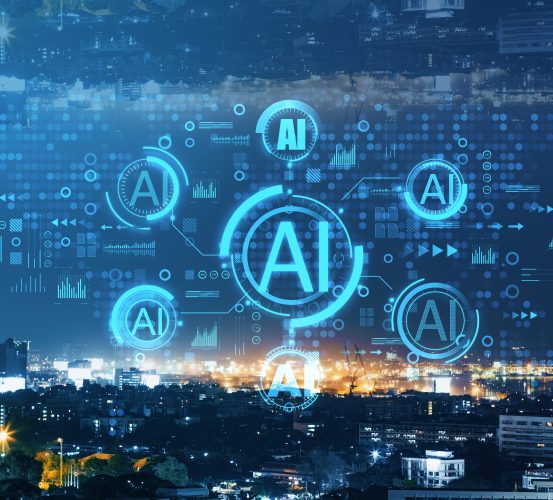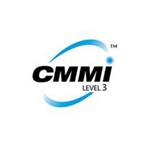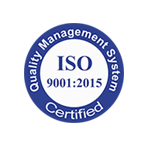Introduction
Quality control has always been a critical part of manufacturing and industrial processes. In the era of Industry 4.0, where automation, IoT, and smart analytics drive production, traditional inspection methods are gradually being complemented by artificial intelligence (AI).
AI-powered vision systems merge computer vision and machine learning to detect patterns, anomalies, and defects in real time. Instead of relying solely on manual or rule-based inspections, these systems analyse images and video data to enhance consistency, accuracy, and speed. While adoption levels vary, the potential of AI vision in improving inspection workflows is being increasingly recognized across multiple industries.

Top 7 Ways AI-Powered Vision Systems Improve Quality Control
Automated Defect Detection
AI-based vision systems can identify even the smallest deviations—such as surface scratches, paint irregularities, or misalignments—that may be difficult to detect manually. Their ability to analyse high-resolution images helps streamline inspection processes and improve product consistency.
Real-Time Monitoring
By integrating with IoT-enabled production lines, AI vision cameras enable real-time defect monitoring. This helps operators take immediate corrective actions when deviations occur, reducing the risk of defective batches and unplanned downtime.
Consistent Accuracy
Human fatigue, bias, or environmental conditions can sometimes affect inspection accuracy. In contrast, AI systems maintain uniform precision 24/7, ensuring that every product is evaluated under the same standards and conditions.
Predictive Quality Insights
AI can study historical defect data and recognize recurring patterns. Manufacturers can then adjust parameters or maintenance schedules proactively helping reduce potential defects before they occur.
Reduced Operational Costs
By automating routine inspection processes, organizations can reduce manual workload, minimize material wastage, and save costs related to rework or product recalls. Over time, these efficiencies can balance out the initial investment.
Enhanced Worker Safety
AI-based cameras are also being used to monitor workplace safety protocols. For instance, they can detect whether workers are wearing required PPE (helmets, gloves, masks) or are entering restricted areas—supporting safer industrial environments.
Scalability Across Industries
AI-powered vision systems are highly adaptable. Whether inspecting components in automotive plants or packaging in pharmaceutical lines, they can be configured for different product types and inspection requirements with minimal adjustments.
Industry Applications
The flexibility of AI vision systems makes them suitable for a wide range of sectors. Below are some examples of how they’re being explored across different industries:
- Automotive: Detecting paint imperfections, assembly misalignments, and part defects to support process optimization.
- Electronics & Semiconductors: Identifying micro-level faults, soldering inconsistencies, or chip-level anomalies.
- Pharmaceuticals: Verifying labelling accuracy, packaging integrity, and dosage consistency.
- Food & Beverage: Ensuring correct sealing, labelling, and product uniformity before distribution.
- Textiles: Monitoring weaving patterns, color uniformity, and fabric defects to maintain quality standards.
- Aerospace & Defense: Supporting component inspection, material analysis, and assembly verification in precision manufacturing.
- Packaging: Checking barcode readability, print quality, and sealing accuracy for diverse consumer goods.
- Renewable Energy: Inspecting solar panels, turbine components, and battery modules for cracks or alignment issues.
- Construction & Infrastructure: Ensuring structural alignment and verifying safety gear compliance on job sites.
Note: The scope and performance of AI vision systems vary by industry and implementation. Their effectiveness depends on dataset quality, integration design, and production environment.
Why AI Vision Systems Are Central to Industry 4.0
Speed + Accuracy
AI vision systems can process high-volume inspections within milliseconds, providing results that would be difficult to achieve through manual checks.
Data-Driven Decision-Making
Beyond visual inspection, these systems collect valuable data. Analytics dashboards can provide insights into defect trends, production efficiency, and potential optimization areas.
Improved Traceability
When integrated with ERP or MES platforms, AI vision systems enable end-to-end traceability—helping industries document quality assurance at every production stage.
Sustainability and Resource Efficiency
By reducing rework, scrap, and energy wastage, automated quality control supports environmentally conscious manufacturing—a growing priority in modern industry.
Conclusion
AI-powered vision systems represent a significant evolution in industrial quality control. By merging automation, analytics, and adaptability, they align perfectly with the principles of Industry 4.0—enhancing consistency, efficiency, and safety. While outcomes depend on implementation quality and data precision, there’s no denying that AI vision technology is reshaping how industries approach inspection and assurance in the digital age.
FAQs
Q1. What makes AI-powered vision systems different from traditional machine vision?
Traditional machine vision relies on predefined rules and static algorithms, while AI-powered systems learn and adapt over time, improving their ability to recognize complex or subtle defects.
Q2. Are AI vision systems expensive to implement?
Implementation costs vary depending on scale, hardware, and integration complexity. However, organizations often find that the long-term benefits—like reduced errors and operational savings—can offset initial expenses.
Q3. Can these systems integrate with existing production setups?
Yes, many AI vision solutions can integrate with current production equipment, PLCs, and ERP systems through modular architecture, minimizing major infrastructure changes.
Q4. Will AI completely replace human inspectors?
Not entirely. While AI reduces dependency on repetitive manual inspections, human oversight remains crucial for strategic decision-making, system calibration, and exception handling.
Q5. Which industries are exploring AI-powered vision in India?
Sectors such as automotive, pharmaceuticals, FMCG, textiles, steel, and electronics are among the active adopters, with others—including renewable energy and defense—showing growing interest.













